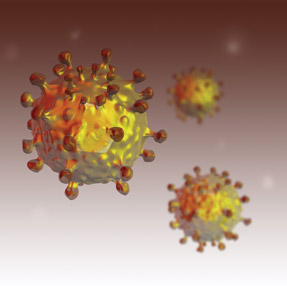ACP begins: College history from 1915 to 1924
This is the first in a series of articles about ACP's history that will be published in 2015 to mark the College's centennial year.
A hundred years ago, the American College of Physicians was just a glint in Heinrich Stern's eye.
Dr. Stern was a physician in New York City, and when he attended a meeting of the Royal College of Physicians in London in 1913, he was inspired to create a similar organization back home.
His colleagues took a little more convincing. The College was incorporated on May 11, 1915, by Dr. Stern and a few other physicians he had recruited. The first meeting was held on June 25, 1915, at the Astor Hotel in New York City, at which the founders declared themselves Fellows of the College “in recognition of their special meritorious services to the science and practice of medicine.”
The latest science of medicine at the time included the discovery of anticoagulants that allowed the storage of blood. In the next few years, insulin would undergo initial animal and human tests as a treatment for diabetes, and hydrocodone would be synthesized for the first time.
Meanwhile, the New York-based founders of the College, led by the first ACP President, Reynold Webb Wilcox, MD, were recruiting members from other parts of the country, including Detroit, Philadelphia, Washington D.C., Chicago, and Newark, N.J. The first annual meetings were held in New York and Pittsburgh.
With the College becoming more nationally diverse, the leaders decided to move its headquarters to a more central location. In 1918, ACP relocated to Chicago. The growing organization also became more exclusive around that time. College leaders announced that members would be booted from the ranks if they were found to be practicing surgery or if they belonged to the American College of Surgeons.
The year 1920 marked 2 big events in ACP history: The first women were admitted to membership, and a journal was launched. The quarterly Annals of Medicine carried both news of the College, including a photo of the Annual Banquet, and medical research, under topic categories like “War Medicine and Reconstruction” and “Glands of Internal Secretion.” Only 3 issues of the original Annals were published, however, before it was shuttered and relaunched in 1922 as the Annals of Clinical Medicine.
In the early 1920s, the Board of Regents and then the Board of Governors were founded. The Regents considered issues not so different from today's, such as whether to cooperate with the American College of Surgeons on hospital efficiency, medical-public interests, clinical teaching, and international professional relations. They also worried about standardizing hospital care and having sufficient postgraduate training opportunities.
In 1923, the College brought the annual meeting to Philadelphia. For perhaps the first time, but certainly not the last, locals had the opportunity to confuse the American College of Physicians with the College of Physicians of Philadelphia, as convocation was held at the latter's Mitchell Hall.
The first Mastership was awarded to retiring ACP President James M. Anders, MD, and College leaders decided to give up wearing caps and gowns during Convocation “to foster the democratic spirit of the American College of Physicians by avoiding all show of ostentation.”
Obviously, that decision was later reversed. The hot topic of the final annual meeting of the College's first decade (held in St. Louis in 1924) could have been grabbed from the most recent of agendas, however.
Upset that younger physicians were increasingly specializing within medicine and using lab tests to make their diagnoses, the Regents declared, “Resolved, that some procedure was necessary whereby the art and science of physical diagnosis, as distinct from the overwhelmingly preponderant laboratory specialization, should be emphasized and considered as of equal worth to investigation of ailing people along mechanistic biological and chemical lines.”
Some things never change.




